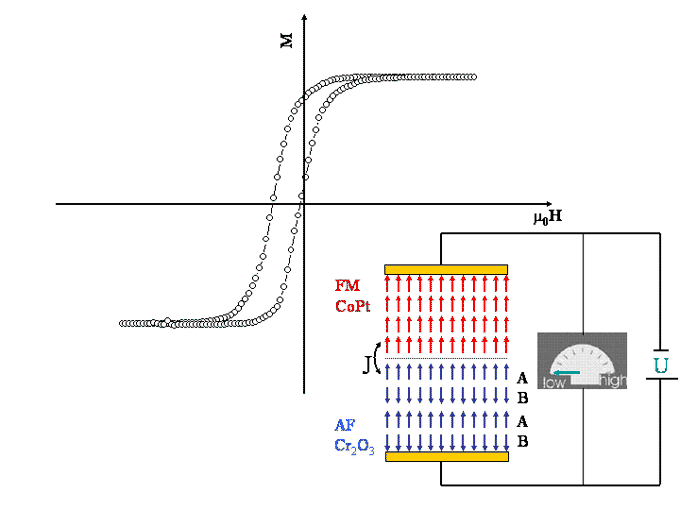Department of Physics and Astronomy: Publications and Other Research

Christian Binek Publications
Document Type
Article
Date of this Version
2-15-2015
Citation
PHYSICAL REVIEW B 91, 054414 (2015). DOI: 10.1103/PhysRevB.91.054414
Abstract
A Landau-theoretical approach is utilized to model the magnetic field induced reversal of the antiferromagnetic order parameter in thin films of magnetoelectric antiferromagnets. A key ingredient of this peculiar switching phenomenon is the presence of a robust spin polarized state at the surface of the antiferromagnetic films. Surface or boundary magnetization is symmetry allowed in magnetoelectric antiferromagnets and experimentally established for chromia thin films. It couples rigidly to the antiferromagnetic order parameter and its Zeeman energy creates a pathway to switch the antiferromagnet via magnetic field application. In the framework of a minimalist Landau free energy expansion, the temperature dependence of the switching field and the field dependence of the transition width are derived. Least-squares fits to magnetometry data of (0001) textured chromia thin films strongly support this model of the magnetic reversal mechanism.


Comments
Copyright (c) 2015 American Physical Society. Used by permission.